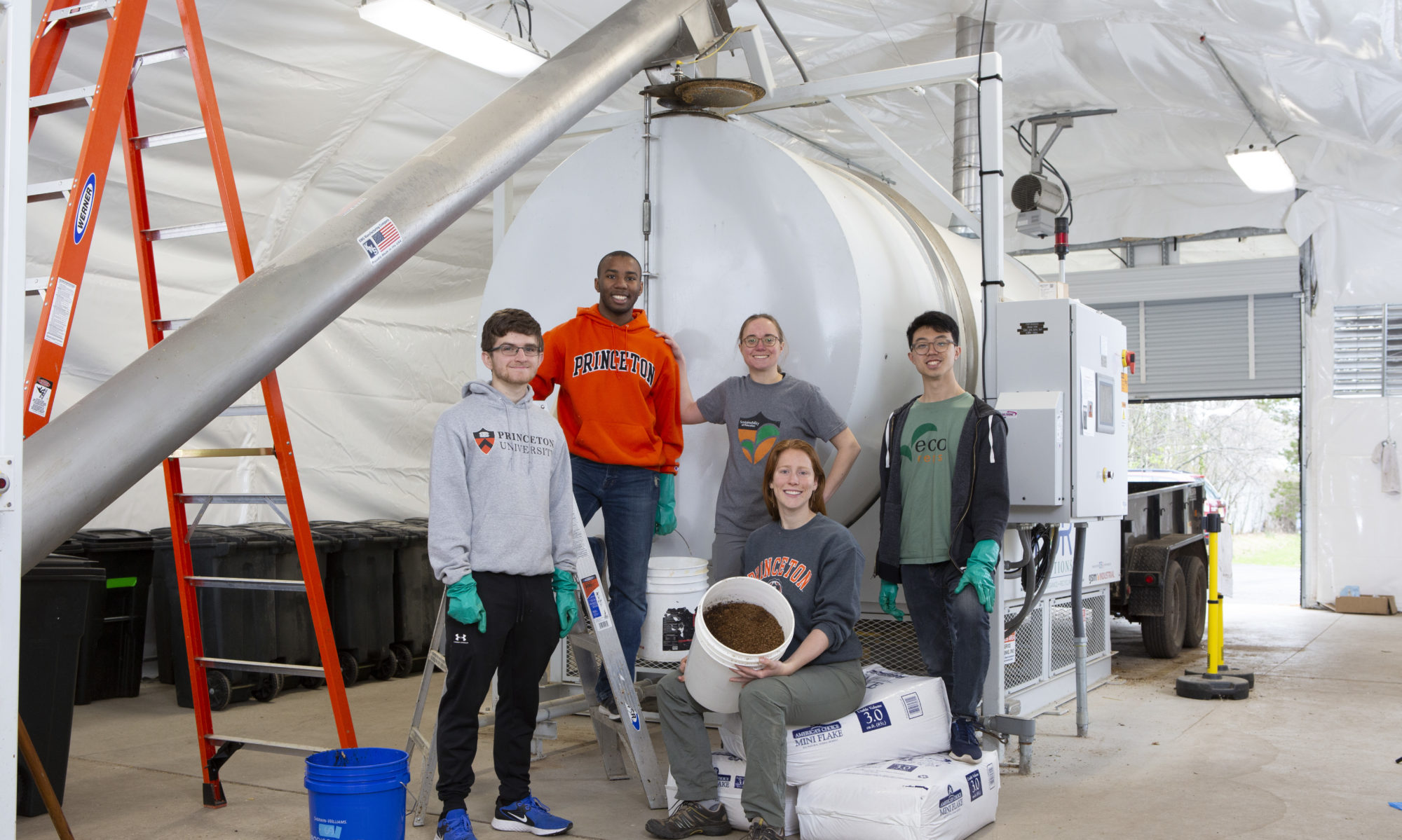Happy First Day of Summer!
This week we will feature other ways compost from the S.C.R.A.P. Lab is being applied on campus in addition to the departmental garden highlighted in last week’s post.
So what happens when compost is off-loaded from the composting system?
Twice a week after the S.C.R.A.P. lab team rakes off-loaded compost into a trailer bed, our Grounds crew hooks the trailer bed to a truck and transports it to a stockpile yard just south of main campus where the compost is dumped into its own outdoor pile covered with a tarp to prevent nutrient leaching.


Periodically, the Grounds crew will draw compost from the pile and blend it with leaves, soil and other compost generated from the campus. When lab tests indicate that this combined or “blended” product reaches a certain maturity index level, the Grounds crew will use it in one of three ways as a soil amendment on campus:
- Mixed into planting mediums during transplantation
- Top-dressed on campus lawns after aeration and before overseeding to break up soil that becomes compacted over the year due to foot and vehicular traffic. Aerating soils by perforating it with small holes and then spreading compost allows for better water, oxygen, and nutrient flow to plant roots.
- Used to make compost tea: a small amount of compost will be placed in a large mesh “tea” bag which is then steeped in water and aerated in a container to create a brewed, water extract of compost. The process extracts the full diversity of beneficial microorganisms from the compost (plus more if additional ingredients are added), and when applied to soils and plants, it can assist in better plant production, soil structure, nutrient cycling, and less disease incidence. It’s like kombucha but for plants* More on this later!
All of this information plus more can be heard in an audio-journalism piece that was nicely composed by graduating senior, Angela Mao ’19. For her final class project, Angela captures a sound journey from food scrap to compost. Hear it here:*
*Clarification Notes:
-
- Kombucha is a fermented product while compost tea is not, but both share the benefits of introducing beneficial bacteria and in turn supporting healthy “immune” systems– whether in humans or plants
- The term “compost” is sometimes referred in the piece as the uneaten food that is collected in the dining venues. This is a common misinterpretation of the word. Compost is what is produced after the uneaten food and a carbon source undergo aerobic decomposition.
- The correct identification of the processing capacity of the FOR Solutions Model 1000 Composting System is “up to 5,000 lbs. of food per week,” rather than “5,000 lbs. at a time.”
Weekly Data: 5/31 – 6/20
As we enter into summer mode with our dining venues on a reduced hours schedule, the total weekly amount of uneaten food processed at the S.C.R.A.P. Lab is about 60% of that during the academic semester.
| WEEK | Total Food | Campus Center & Cafes | Academic /Residential Buildings/Events* | Wood Shavings (BA/CS) | % BA/CS | Compost Off-Loaded | GHG Emissions Saved (MTCO2-eq) |
| 5/31 – 6/6 | 2,222 | 2,160 | 62 | 642 | 29% | 2,000 | |
| 6/7 – 6/13 | 2,232 | 2,101 | 131 | 772 | 35% | 2,000 | |
| 6/14 – 6/20 | 2,375 | 2,302 | 73 | 818 | 34% | 2,000 | |
| Cumulative (lbs) | 96,875 | 94,983 | 1,892 | 30,278 | 31%* | 83,500 | 29 |
* Included in these totals is about 125 lbs. of uneaten food that was recovered from two events on campus
Thanks to all of the friends and alums who came to the S.C.R.A.P. Lab Reunions tour on the 31st!


I’m not visible in the photo but was still so glad to be there!
Cheers from Ireland!
Glad you enjoyed the tour, Quinton! It was nice to meet you in person and I hope you enjoyed your 5th Reunion.